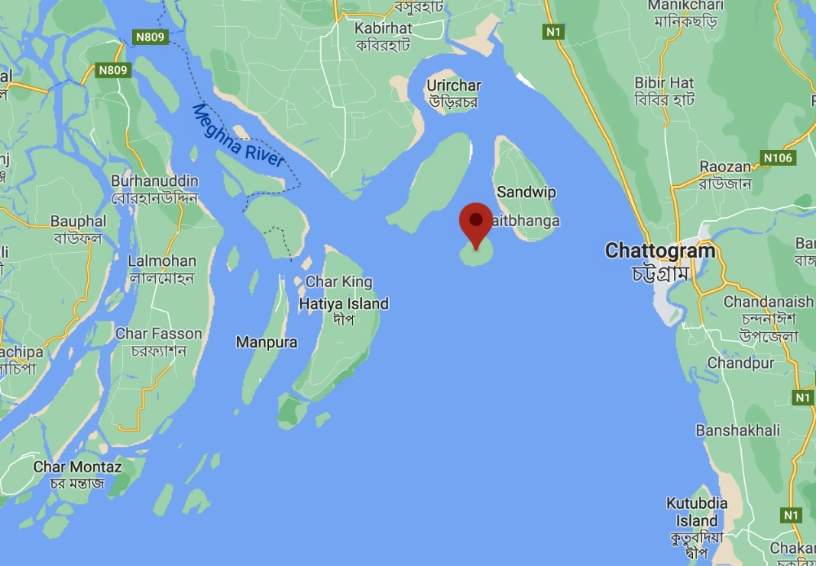One of the most persecuted minorities across the globe — the Rohingyas have yet again become victims due to the massive relocation plans of Bangladesh. On Dec. 4, 2020, seven Bangladeshi Naval ships departed for Bhasan Char Island, from Chittagong Patenga, carrying around 1600 Rohingya refugees. Rohingyas are being sent to the island, as a part of Sheikh Hasina’s initiative to declutter camps in Bangladesh’s Cox’s Bazar. This article investigates the plight of the Rohingyas with respect to the ongoing relocation and their way ahead.
The Rohingyas — ethnically belonging to Myanmar, were forced to flee their homes and take asylum in Bangladesh due to the discriminating policies of the Myanmar government. This inadvertent influx of Rohingyas since the 2017 brutal military crackdown in the Rakhine state of Myanmar have become a stumbling block for Bangladesh. According to the United Nations Children’s Fund (UNICEF), as of September 2019, around 1,295,000 people were estimated to be in need of humanitarian assistance, of which Cox’s Bazar District sheltered around 855,000 Rohingyas. In 2018 Bangladesh and Myanmar signed a deal to repatriate these refugees. However, not a single Rohingya reportedly returned to Rakhine because of the hostile conditions that has ripped the region. It was in March 2019 that Bangladesh announced that it will no longer accept the Rohingya refugees fleeing from Myanmar.
Relocation: A home away from home

Bhasan Char is an island in Bangladesh’s Hatiya Upazila. Located in the Bay of Bengal, the island surfaced in 2006 from the sediment deposited by the river. The island which is on the mouth of Meghna river is flood prone. Sediment is carried away from the Himalayas to the Bay of Bengal by the tributaries of Ganges, Brahmaputra and Meghna Rivers, every year. The banks break during the rainy season when the river overflows, leading to wiping out of large pieces of land.
The government of Bangladesh has reportedly built hospitals, shelters, towers, administrative buildings, healthcare clinics and mosques in the island. The construction and installation started in March 2017 when a helipad was built in the island. Subsequently, roads and tracks were constructed. By August 2018, building blocks and flood embankments were seen to be constructed. As per the relocation plan, there would be 1440 buildings to house around 1 lakh refugees.
Several reports on the ongoing relocation process to Bhasan Char postulates contrasting stories. While some reports claim refugees, who are voluntarily willing to relocate have been moved to the island; some claims that refugees have been forced to go to the Bhasan Char and a few other state that they had to register themselves to be relocated. According to few other reports, the Rohingyas are not allowed to leave the island unless they agree to move to Myanmar. There also seems to be a confusion over the list that might have been published.
For the Rohingyas, relocation to the Bhasan Char island seems to be an opportunity for a better living. They are contented to receive the infrastructures laid out in Bhasan Char as compared to the clamped camps, lack of sanitation facilities and education in Cox’s Bazar. To them, it means a place of habitation with preferable facilities, contrary to what they faced in Cox’s Bazar and Rakhine. The government of Bangladesh will reportedly provide the refugees with ration supplies for the next six months until they start to earn their livelihoods. Mizanur Rahman, additional secretary for the Office of the Refugee Relief and Repatriation Commissioner, which oversees the camps, said authorities are showing videos featuring finished housing blocks, which he said are solid compared to the fragile bamboo shelters in the existing camps. However, what the Rohingyas fail to understand is that, residing in Bhasan Char would be more controlled and stringent as compared to what they faced in Cox Bazar. The island, which is several miles away from the mainland is certain to face few challenges in receiving aids from time to time. The UN has also expressed concerns over the relocation and continues to seek access to the Bhasan Char to carry out feasibility and humanitarian studies.
Life at Bhasan Char — a grinding reality ahead
The life of Rohingyas, following mass influx from Myanmar in 2017- still raises a series of concerns in humanitarian terms. As they move forward to seek refuge with better amenities, it would be difficult to ascertain their return to their homeland, i.e., Rakhine in Myanmar. The Bangladesh government will have to struggle to provide basic amenities to them due to socio-political and economic conditions. Nevertheless, it has been trying to dispense aids to them on humanitarian premise over the years. There is a desperate obligation to provide a dignified life to the Rohingyas. However, as we take a closer look into the current plight of these refugees, a prospect for a better life in Myanmar or Bangladesh seems unlikely. The Rohingyas are plausibly going to be more dependent on the aids received by international organizations and the Bangladeshi government. Life ahead in Bhasan Char looks dubious due to the question on the sustainability of the island. Additionally, they are also certainly going to face challenges on security grounds, due to continued antipathy from locals of the place they are seeking refuge in. The Rohingya crisis cannot be resolved efficiently unless Myanmar, Bangladesh and various international organizations under the aegis of the UN work collaboratively on the issue. Furthermore, there is a need for Myanmar to take an upper hand on accepting its people regardless of the Rohingyas’ ethnic differences. Rehabilitation to their homeland, i.e Myanmar should be seen as a more feasible option as compared to relocation to some untenable remote island.
The views and opinions expressed in this article are those of the author.

Priyanjoli Ghosh works as an Analyst, focusing on geopolitical events. She holds a master’s degree in International Studies from Christ University, Bangalore. She has previously written for the Journal of Indo-Pacific Affairs, which is one of the professional journals of the U.S Air Force; National Maritime Foundation, an independent think-tank supported by the Ministry of Defense, India; and The Geopolitics.

